Spirontocaris lamellicornis (Dana, 1852)Common name(s): Dana's blade shrimp, Dana's bladed shrimp |
|
| Synonyms: Hippolyte lamellicornis | 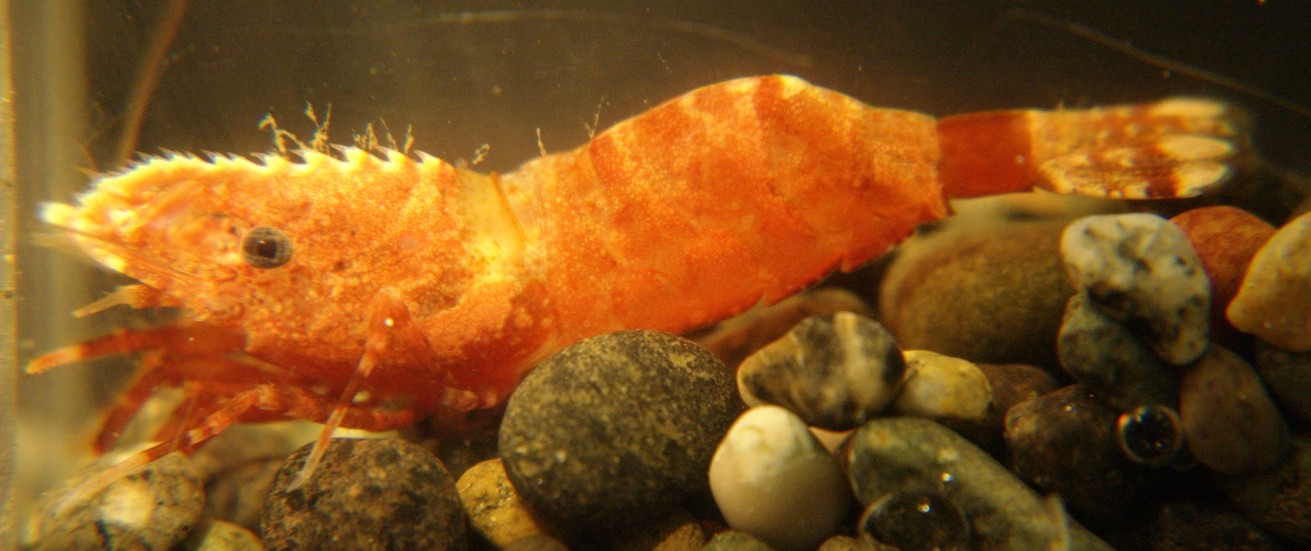 |
|
Phylum Arthropoda
Subphylum Crustacea
Class Malacostraca
Subclass Eumalacostraca
Superorder Eucarida
Order Decapoda
Family Thoridae (formerly assigned
to Hippolytidae)
|
|
| Spirontocaris lamellicornis, captured from 60-100 m depth in San Juan Channel. | |
| (Photo by: Dave Cowles, July 2010) | |
Recently members of family Hippolytidae which have seven articles in the carpus of the 2nd pereopod have been reassigned to family Thoridae.
How to Distinguish from Similar Species: Spirontocaris prionota has small spines on the anterior margins of its mid-dorsal carapace teeth. Spirontocaris ochotensis, S. truncata, S. arcuata, S. spina, and S. snyderi have bifid tips on the dactyls of pereopods 3-5.
Geographical Range: Bering Sea to Santa Monica Bay, CA. Mostly north of Point Conception, CA but some have been found in canyons in Santa Monica Bay.
Depth Range: Subtidal, 3-192 m.
Habitat: Mostly on sand and mud, some in rocky areas.
Biology/Natural History: This species is often found symbiotically with sea anemones including Cribrinopsis fernaldi and Urticina columbiana. In the Salish Sea and coastal British Columbia the species is often infested by the branchial isopod Bopyroides hippolytes.
| Return to: | |||
| Main Page | Alphabetic Index | Systematic Index | Glossary |
References:
Dichotomous Keys:Kozloff, 1987, 1996
Wicksten, 2009
General References:
Butler,
1980
Jensen,
1995
Lamb
and Hanby, 2005
Scientific Articles:
Web sites:
General Notes and Observations: Locations, abundances, unusual behaviors:

This is frozen specimen about 6 cm long. Found by Hilary Lease near Friday Harbor.
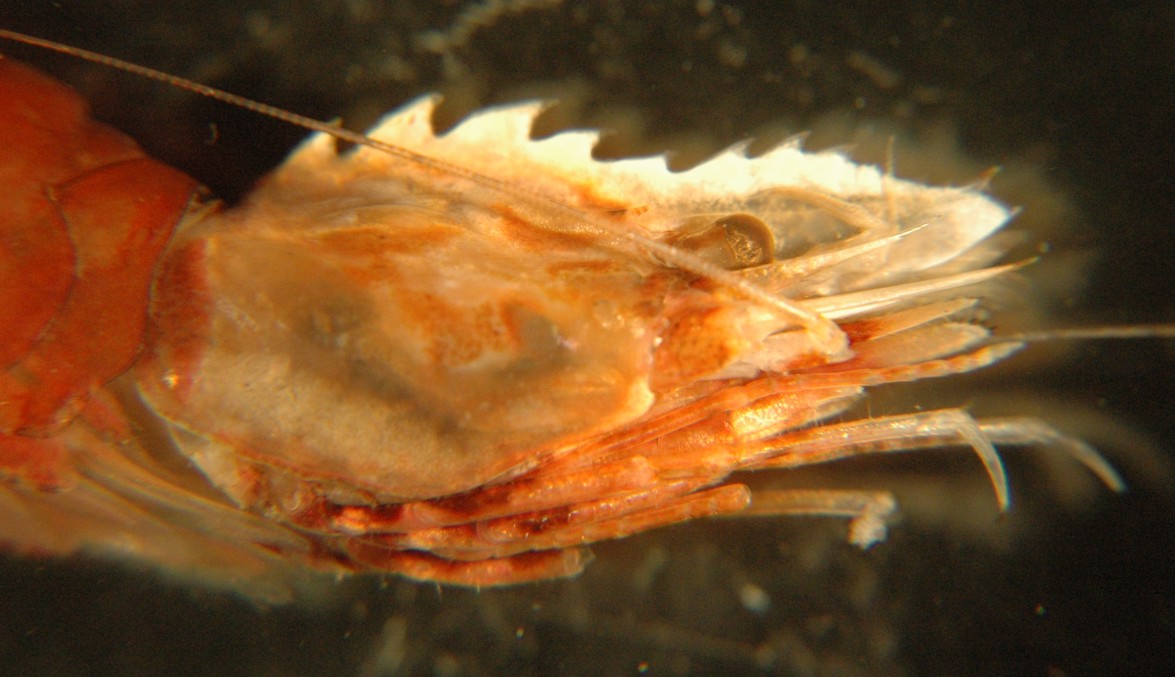
This closer view of the carapace
and rostrum
shows how deep the rostrum
is and the large mid-dorsal teeth. A frozen individual.
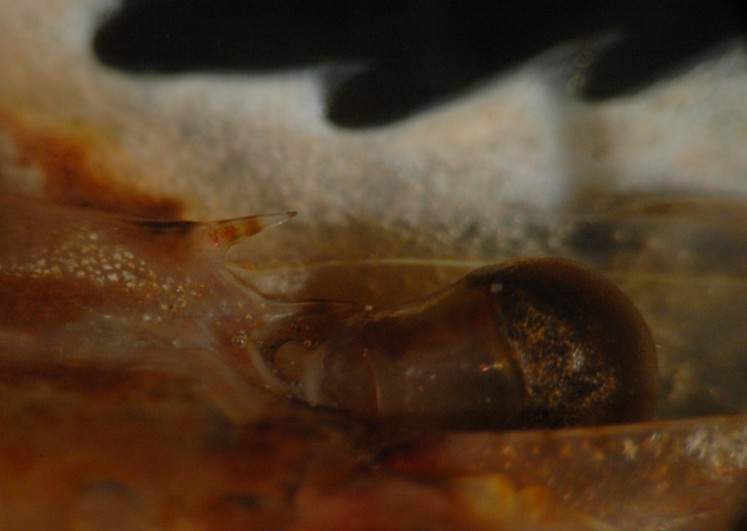
The two supraorbital
spines are visible in this photograph. A
frozen individual.
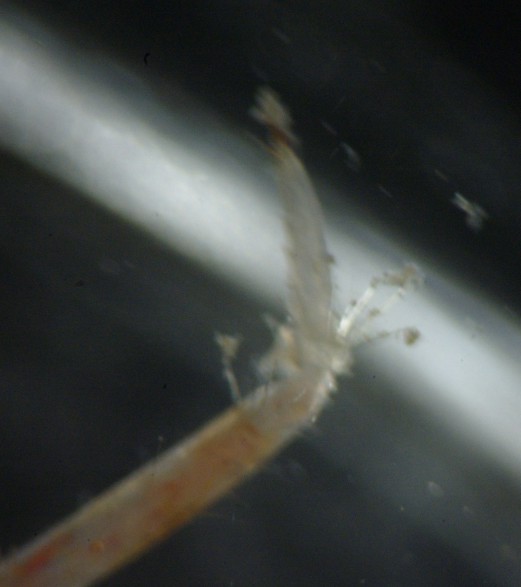
The dactyls of pereopods 3-5 have simple but curved tips. Photo of live individual by Dave Cowles, July 2010
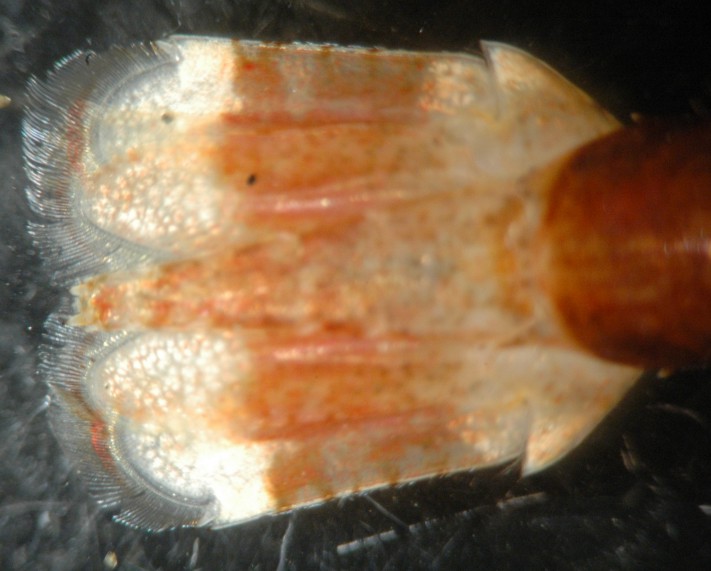
The uropods
and telson
are often banded with lighter colors. A frozen
individual.
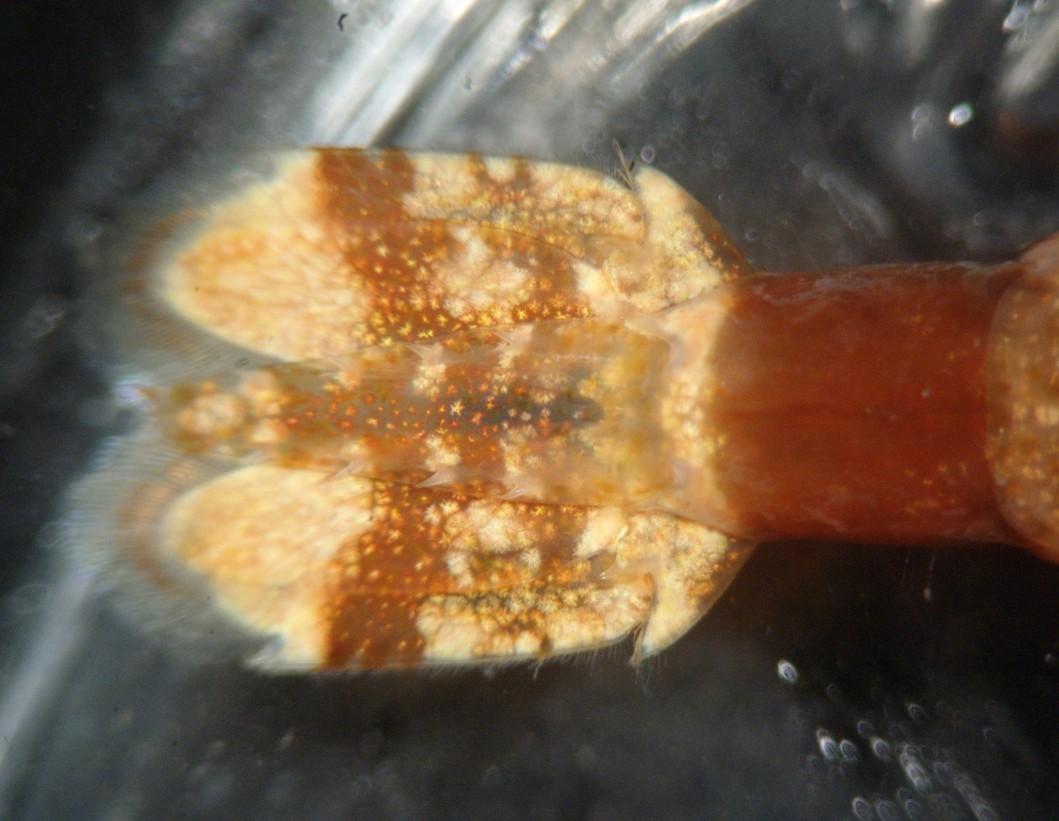
This photo of a live individual also shows the banded telson, plus the red color of the sixth abdominal segment.
Authors and Editors of Page:
Dave Cowles (2009): Created original page
CSS coding for page developed by Jonathan Cowles (2007)
Rosario Invertebrates web site provided courtesy of Walla Walla University